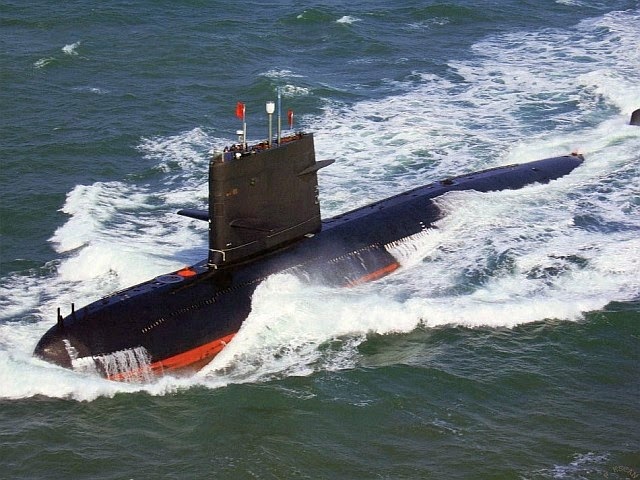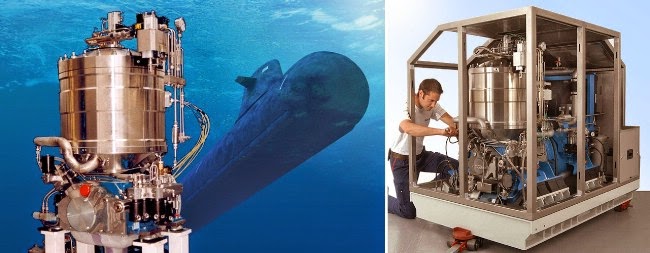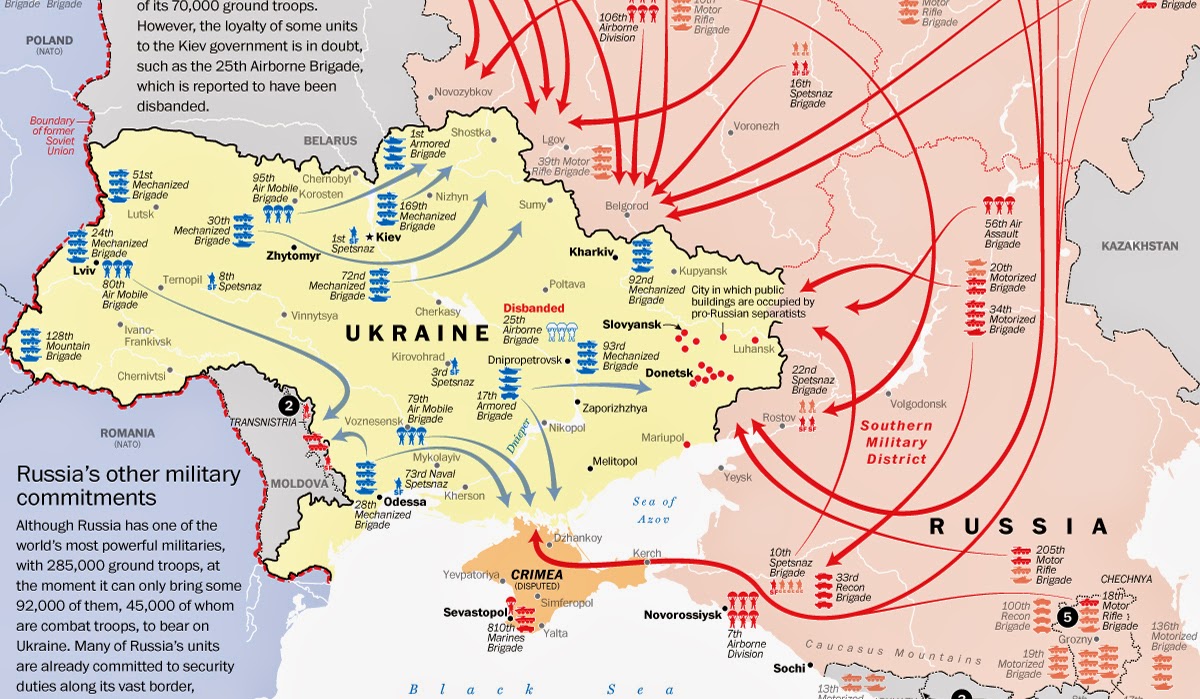Anders Carp of Vice President Saab (on left) promoting Swedish submarines for Australia
--
Hans-Christoph Atzpodien, Chairman TKMS, promoting German submarines.
The corporate battle between Sweden-Saab and Germany’s TKMS is heating up. A conference held in Canberra, Australia over the last week very much concerned competition among Swedish and German participants to win Australia's future diesel-electric submarine order of up to $40 billion.
As can be seen in the article below there is a major surprise that there is no consensus among Australia's government and private industry entities on how the future submarine project should proceed.
"...Sweden had shot itself in the foot by previously selling the Collin-class designer Kockums to the Germans, robbing it of the capacity to design and build its own submarines.
All of a sudden, the only realistic prospect left to design the new Australian submarines were the Germans via submarine builder ThyssenKrupp (TKMS). The Germans had more than 70 years’ experience in submarine design and building and, with an eye to Australia’s program, TKMS had drawn up a design concept for a 4000-tonne submarine dubbed the 216. It was only a “paper submarine”, given Germany had never built such a large boat, but at least it was a credible option.
In February [2014] it suddenly dawned on all the players that Germany was poised to [win] the largest design contract in Australian history because all of its potential competitors had fallen over.
But then, just when the Germans could taste victory, the Swedes decided to swoop.
They launched a remarkable campaign to deal themselves back into the submarine game by sabotaging the Germans and wooing the Australians.
The Swedes’ actions in recent weeks have become the talk of the global arms trade.
Having foolishly sold off its submarine building capability to Germany in 1999, Sweden now wants it back, a desire fuelled further by Russia’s recent aggression in Ukraine.
In February [2014] the Swedish government asked its largest defence company, Saab, to study the feasibility of Sweden re-establishing its submarine capability without the Germans, who in 2010 had been asked to build Sweden’s new submarines, known as the A26.
Saab is a hugely successful Swedish institution, having built the country’s fighter jet, but it has never built submarines, does not have a shipyard and until recently had few submarine experts.
But with the hot breath of its government at its back, Saab has launched an astonishing industrial raid on workers at the TKMS-owned Kalskrona shipyard in Sweden.
It has been holding workshops after work, evoking Swedish nationalism and offering rich rewards to those who swap sides,
In the past four weeks, an astonishing 100 submarine builders have been successfully poached, doubling Saab’s potential submarine workforce.
The trouble with the Swedish plan is that Sweden will not need enough submarines to sustain its industry alone. It needs overseas work. It needs Australia.
[In March 2014] Sweden made its move on Australia, sending a powerful five-member delegation to Canberra, including its navy chief Rear Admiral Jan Thornqvist and Lena Erixon, the feisty head of its defence materiel administration, FMV.
The Swedes knocked on every door they could find, both professional and personal, selling Sweden’s dream of designing Australia’s new submarine
Thornqvist even dined at the home of Australian naval chief Vice-Admiral Ray Griggs, having previously given him a personal tour of the Vasa maritime museum in Stockholm and a wild boat ride through the Swedish archipelago.
After that dinner, Thornqvist retired to the bar of the Hyatt Hotel [in Canberra] to drink scotch with Saab executives and to reflect on events.
The Australian government was surprised and a little sceptical to hear of Sweden’s grand play for its submarine project. But the move by Sweden and Saab gives Australia more potential design options for its submarines, so Canberra did not try to dissuade the Swedes.
On March 18, only days after the group returned from Australia, Sweden formalised its divorce from the Germans. In a frosty meeting in Stockholm, Erixon called in senior TKMS executives and read to them from a prepared statement.
“It was like an execution decree,” recalls one of the German officials. “She read from a statement saying: ‘We will never do business with you, we do not trust you.’ ”
Saab has stepped up its own public relations campaign, flying The Australian to Sweden last week to visit its facilities, convey its strategy and to discuss the planned expansion of its operations in Australia.
Saab [Vice President] Anders Carp says a benefit to Australia of having Sweden as a partner is that part of Sweden’s own submarines could also be built in Adelaide, supplementing Australia’s program and helping sustain local shipbuilding.
He even implied Saab could be interested in acquiring the government-owned submarine shipbuilder in Adelaide, ASC.
But Saab is also feeling the heat on several fronts.
On April 4 its internal communications were intercepted by an unknown foreign entity, prompting a warning to its executives to be wary of industrial espionage at this heated time.
The Germans are furious about Sweden’s actions and they used an Australian Strategic Policy Institute conference in Canberra this week to fire back at the Swedes and secure their position as the design frontrunner for the $40bn submarine program.
Germany’s TKMS dispatched a powerful delegation led by its chairman, Hans-Christoph Atzpodien, to Canberra. They met Defence Minister Johnston in the Hyatt Hotel’s Murrumbidgee room and sold their wares.
The Germans also met other heavy-hitters including the Defence Materiel Organisation’s head Warren King and general manager submarines David Gould.
Just to make sure their message was heard, TKMS hosted champagne drinks at the conference dinner at the Australian War Memorial on Wednesday evening. Speaking under a suspended World War II Messerschmitt fighter, Atzpodien told Australia’s military and defence elite that his company wanted “to be partners” with Australia.
Inside the Hyatt conference room the next day, the Germans and the Swedes prowled around, carefully avoiding each other, while retreating to dark corners to brief admirals, defence officials and other policymakers about their ambitions.
Almost all of the world’s submarine builders were at the ASPI conference and, while they were too polite to say so publicly, many were dismayed by the almost complete lack of consensus among the Australians about the way forward.
Their irritation reached its zenith on Wednesday when the head of the future submarine project team, Simon Todd, stood up and advocated that Australia develop its own sovereign design submarine capability.
Word of his speech — which appeared to be at odds with the message given to the integrated project team by Johnston last December — filtered back to an unimpressed Defence Minister.
The foreign representatives at the meeting were equally stunned.
That evening, a member of the German delegation fired off an email to Johnston, warning that if Australia was moving back to a home-grown design, then the Future Submarine program was potentially the “biggest disaster” Australian defence had seen.
Defence is preparing options for the government, which has said it wants to make a final decision by early next year on who will design the submarine, although sources say this deadline will not be met.
A senior government source admits that the giant program is “in limbo”.
Sources say the government has all but dismissed the notion that the new submarines will be an evolved version of the Collins because Sweden still owns the intellectual property for the Collins and a new agreement will be too hard to negotiate.
There is also a view in Defence that the Collins technology will be too old to upgrade successfully. “You can upgrade a Toyota, but it is still a Toyota,” one insider said.
This means the new submarines will be a brand-new design, the most risky and expensive option. Johnston has at least minimised some of this risk by insisting that an experienced foreign designer such as Germany or Sweden should design the boat, notwithstanding the preferences of the utopians in Defence. But even this may not be enough.
Johnston’s office has been too scared to place the future submarine issue on the radar of Joe Hockey or Abbott, fearing that the huge sums involved will lead to the program being severely curtailed.
This week, Johnston sniffed the wind and flagged that Australia may built fewer than 12 new submarines. As one observer put it: “If you were David Johnston and you had a document on it that said $40bn, would you pass that over to Joe Hockey before you needed to?”
Johnston will need to bite the bullet at some point soon because the new submarines will need to come into service in the early 2030s to replace the Collins-class boats, which themselves will need a life-extension to cover for the slow progress in the new submarine program.
This means detailed design work will need to begin within two years, with the aim of cutting steel by 2023.
In others words, the government will soon have to pay serious money for this project and Johnston will need to make a clear and precise case to win the support of the Treasurer and the Prime Minister.
But as Australia fiddles, the world is circling. The Baltic war between the angry Germans and the sneaky Swedes is just a prelude to the dirty games that will unfold in the years ahead as Australia tries to play with the big boys of the global arms trade."






















